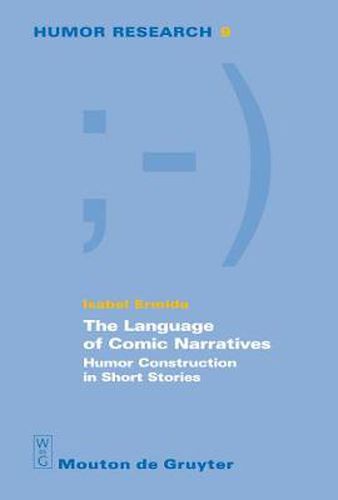Readings Newsletter
Become a Readings Member to make your shopping experience even easier.
Sign in or sign up for free!
You’re not far away from qualifying for FREE standard shipping within Australia
You’ve qualified for FREE standard shipping within Australia
The cart is loading…






This title is printed to order. This book may have been self-published. If so, we cannot guarantee the quality of the content. In the main most books will have gone through the editing process however some may not. We therefore suggest that you be aware of this before ordering this book. If in doubt check either the author or publisher’s details as we are unable to accept any returns unless they are faulty. Please contact us if you have any questions.
The book offers a comprehensive account of how humor works in short stories, by presenting a model of narrative comedy that is pragmatically as well as semantically, grammatically and stylistically informed. It is the first study to combine a sequential analysis of the comic short story with a hierarchical one, merging together horizontal and vertical narratological perspectives in a systematic way. The book covers the main areas of linguistic analysis and is deliberately interdisciplinary, using input from philosophy, sociology and psychology so as to touch upon the nature, motivations and functions of humor as a cognitive phenomenon in a social context. Crucially, The Language of Comic Narratives combines a scholarly approach with a careful explanation of key terms and concepts, making it accessible to researchers and students, as well as non-specialists. Moreover, it reviews a broad range of historical critical data by examining the source texts, and it provides many humorous examples, from jokes to extracts from comic narratives. Thus, it seeks to anchor theory in specific texts, and also to show that many linguistic mechanisms of humor are common to jokes and longer, literary comic narratives. The book tests the model of humorous narratives on a set of comic short stories by British and American writers, ranging from Evelyn Waugh and Dorothy Parker, through Graham Greene and Corey Ford, to David Lodge and Woody Allen. The validity of the model is confirmed through a subsequent discussion of apparent counter-examples.
$9.00 standard shipping within Australia
FREE standard shipping within Australia for orders over $100.00
Express & International shipping calculated at checkout
This title is printed to order. This book may have been self-published. If so, we cannot guarantee the quality of the content. In the main most books will have gone through the editing process however some may not. We therefore suggest that you be aware of this before ordering this book. If in doubt check either the author or publisher’s details as we are unable to accept any returns unless they are faulty. Please contact us if you have any questions.
The book offers a comprehensive account of how humor works in short stories, by presenting a model of narrative comedy that is pragmatically as well as semantically, grammatically and stylistically informed. It is the first study to combine a sequential analysis of the comic short story with a hierarchical one, merging together horizontal and vertical narratological perspectives in a systematic way. The book covers the main areas of linguistic analysis and is deliberately interdisciplinary, using input from philosophy, sociology and psychology so as to touch upon the nature, motivations and functions of humor as a cognitive phenomenon in a social context. Crucially, The Language of Comic Narratives combines a scholarly approach with a careful explanation of key terms and concepts, making it accessible to researchers and students, as well as non-specialists. Moreover, it reviews a broad range of historical critical data by examining the source texts, and it provides many humorous examples, from jokes to extracts from comic narratives. Thus, it seeks to anchor theory in specific texts, and also to show that many linguistic mechanisms of humor are common to jokes and longer, literary comic narratives. The book tests the model of humorous narratives on a set of comic short stories by British and American writers, ranging from Evelyn Waugh and Dorothy Parker, through Graham Greene and Corey Ford, to David Lodge and Woody Allen. The validity of the model is confirmed through a subsequent discussion of apparent counter-examples.